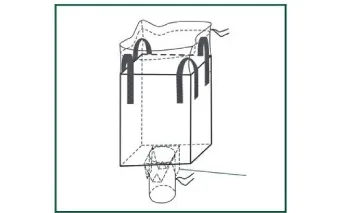single needle lock stitch
Understanding the Single Needle Lock Stitch A Vital Component in Sewing Technology
The single needle lock stitch is a fundamental concept in the realm of sewing and garment manufacturing. This stitch type, characterized by its simplicity, durability, and versatility, plays a crucial role in a wide variety of sewing applications, from everyday clothing production to intricate textile designs. Understanding its mechanics and benefits can help both amateur sewers and professional tailors appreciate its significance in the textiles industry.
At its core, the single needle lock stitch is produced using a single needle and a spool of thread to create a stitch that intertwines two threads—one from the needle and one from the bobbin—locking them in place. This locking mechanism is achieved by the needle piercing through the fabric, looping around the bobbin thread, and forming a secure stitch. The result is a tight, strong stitch that is less likely to unravel than other stitch types.
One of the primary advantages of the single needle lock stitch is its incredible strength. This feature makes it ideal for seams that experience stress, such as those found in jeans or heavy outerwear. The lock stitch can handle the rigors of wear and tear while maintaining a neat appearance, which is essential for garments that need to withstand daily use.
Another significant benefit of the single needle lock stitch is its ability to produce a flat and smooth seam. This is particularly important when sewing lightweight or delicate fabrics where bulkiness can ruin the aesthetic. The single needle allows for precise control, enabling seamstresses to create clean, professional-looking stitches that are not only functional but also visually appealing.
single needle lock stitch

In addition to its robust performance, the single needle lock stitch is also highly adaptable. It can be employed for a variety of sewing tasks, from constructing basic seams to performing detailed decorative stitching. This versatility makes it a favored choice among both industrial and home sewing machines. Many sewing enthusiasts appreciate the stitch for its simplicity and ease of use, which caters to a broad range of skill levels.
However, while the single needle lock stitch offers numerous advantages, it's essential to recognize a few limitations. For instance, this stitch type does not have as much stretch as other stitch types, such as serged stitches or zigzag stitches. This means it may not be the best choice for sewing stretchy fabrics like knitwear, where greater elasticity is required for comfort and movement.
When it comes to machine settings and adjustments, achieving the best results with a single needle lock stitch often requires some knowledge and finesse. Adjusting the tension on the machine properly is crucial to avoid issues such as thread breakage or puckering of the fabric. Experienced sewists often emphasize the importance of regular machine maintenance to ensure optimal performance, particularly as machines used for heavy-duty projects may be subjected to more wear.
In conclusion, the single needle lock stitch is a cornerstone of sewing technology, combining strength, versatility, and a clean finish. Its effectiveness in creating durable seams has solidified its position as a reliable choice for garment construction and repair. Whether you're a home sewer looking to enhance your skills or a professional tailoring expert, mastering the single needle lock stitch can open up a world of possibilities in your sewing endeavors. Understanding its mechanics and applications paves the way for creating high-quality, long-lasting garments that stand the test of time.
-
Industrial Cylinder Arm Sewing Machine: Revolutionizing Heavy-Duty SewingNewsJul.28,2025
-
Cylinder Arm Sewing Machine: Perfect for Special Sewing ApplicationsNewsJul.28,2025
-
Cylinder Bed Sewing Machine: Essential for Sewing Complex MaterialsNewsJul.28,2025
-
Heavy Duty Sewing Machine: The Essential Tool for Industrial ApplicationsNewsJul.28,2025
-
Computerized Pattern Sewing Machine: Revolutionizing Precision StitchingNewsJul.28,2025
-
Heavy Duty Industrial Sewing Machine: Power Meets PrecisionNewsJul.28,2025
-
Leather Sewing Machine: The Industrial Standard for Tough MaterialsNewsJul.18,2025





























